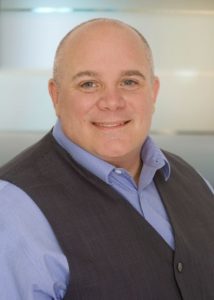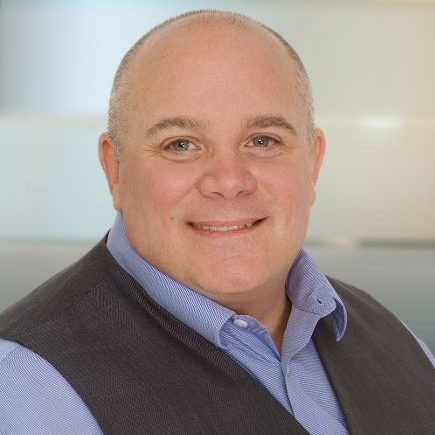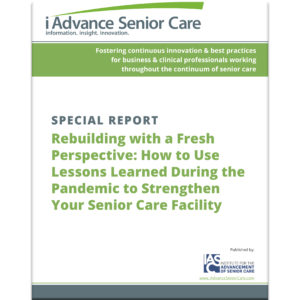Addressing Unprecedented Talent Needs in Senior Living

David Wilkins, chief strategy officer, HealthcareSource
The rapid spread of COVID-19 has led to a dramatic increase in demand for healthcare workers. This uptick is not only due to the increase of people needing care, but also to the level of acuity of the patient load and the loss of talent due to infections. In senior living and senior care, this is even more challenging with older adults at greater risk for infection and talent pools that have already been stretched to their limits.
In any crisis, the first goal should be to move from reacting to acting. The second goal once you’ve reached a point of stability is to begin anticipating what will happen next – while also seeking new opportunities amid the chaos of the changed environment. For senior living and senior care organizations, there are significant opportunities because of COVID-19.
For years, senior living and senior care organizations have been fighting a losing battle with box stores, retail, fast food and hospitality sectors for low skilled labor, and with hospitals, health systems, urgent care centers and ambulatory surgical centers for clinical talent.
This has completely changed in the last few months. With mass layoffs, furloughs and reduced hours hitting all of these sectors, there has been a surge of workers entering the ranks of the unemployed or the disengaged.
For those organizations that have the will, skills and the tools to take advantage, there are real opportunities for them to hire open positions in the near-term and establish brand and even industry-wide loyalty for the long term.
As we face a serious healthcare crisis, recruitment can no longer be viewed as business as usual. Consider the following strategies to help accelerate your hiring:
Mobilize a call of arms to hire non-clinical workers from adjacent industries like hospitality, retail, travel, and fast food. Develop hiring campaigns to attract displaced or at-risk hospitality and retail workers. Focus on the “call to arms” nature of this crisis. This will not only solve your short-term hiring needs; you will also attract workers with strong service orientation who may be well suited for long-term healthcare careers.
Develop hiring campaigns for hospital and health system workers disrupted by layoffs, reduced hours, and furloughs. Create campaigns that focus on service, community and family values – the same things that drew them to healthcare work in a different sub-sector. Highlight the job stability in senior living and senior care along with the tremendous need for high quality talent in the space to provide quality care to your residents and clients.
Launch a hire-back campaign. Tap into your network of recently retired – but still credentialed – RNs, CNAs and doctors. Reach out to other former staff, including CNAs and non-clinical employees. Flip the script on retail businesses that have been luring your staff with higher wages, whether that’s a local hospital competitor or a fast food location. Offering job security and stability will go a long way in this economy.
Get creative about untapped pools of talent. Work with local nursing schools. If someone is nearing graduation, can you leverage practicum rotations to support your staffing needs in specific, targeted ways? Reach out to staffing agencies to have strategic conversations about your anticipated resource needs, especially short-term staffing needs if you face shortages due to infections.
Go digital. Senior living tends to be a late adopter of technology, yet technology innovation enables senior providers to leverage new recruitment, hiring and development strategies and solutions including sourcing, candidate relationship management, video interviews, texting, virtual onboarding, remote training, etc. This will streamline and improve your hiring process, providing a significant advantage to those that can embrace these talent-related innovations.
Over-communicate with your market. Now is time to inform, educate and communicate with your labor market to draw previous employees, applicants and others back into the senior care workforce. Become a trusted source of news and information to your local labor market by sharing the steps you are taking to ensure the health and safety of your workers and what you are doing from a community outreach perspective.
Share stories about what your best and brightest are doing to make an impact at your organization and in your city or region. In the process, you’ll be sharing valuable information to help your local communities while also educating and supporting your future workforce, which will help build a strong employer brand foundation that will yield dividends for years to come.
Work with local news agencies to highlight openings and talent needs. News stories that would normally be rejected may be accepted given the COVID-19. It’s in your community’s interest to have fully staffed healthcare facilities and senior providers certainly meet that criteria. A human-interest story about hiring challenges or about the efforts your organization is taking to keep residents safe is free advertising and awareness building for your brand.
This is a trying time for senior care and senior living providers. Do everything in your power to support your staff and make sure they have what they need to get through this safely while delivering the highest quality care to their patients and residents.

David Wilkins is chief strategy officer at HealthcareSource. He is responsible for HealthcareSource product and solution strategy with oversight of the multi-year roadmap, related market research, and new product innovation. He has over 20 years of experience in talent management leadership roles and is a thought leader in the field of human capital management across a variety of critical subjects, including learning theory, social enterprise practices, and strategic talent management.
Related Articles
Topics: Administration , Clinical , Departments , Featured Articles , Staffing , Training










